

RCA Calculators

(or are they space helmets ?)
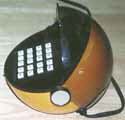
By Guy Ball, with additional information and photographs from Philip Cole.
Recently two things came up that made me want to post at least some minimal information on RCA calculators. First of all, you hopefully know that RCA is, and has been, a leader in electronics technology. With all the mergers of the last few decades, the once independent RCA was bought by GE in 1986 and was subsequently split up.
Back in the mid-1970s, they came out with a few electronic calculators. As far as I can tell, RCA did some trial products to see if they wanted to be in the business. These products appear to have been made by other companies (possibly Garrett). I will need to do a bit more research on this because the RCA people I have talked to have no record of their calculator efforts.
One instruction manual I have (for the RCA model 3C1010) tells you to send your calculator to RCA Specialty Products; Bee Tree Road; Swannanoa, North Carolina 26778 for repairs. I am not sure if this is their repair "depot" or the base for their (limited) calculator product line.
There seem to be two major case variations of RCA calculators known so far. One is a flat, boxy model with large push-button switches for some functions. Collector Kurt Lofback owns a model 3C3030 and was kind enough to supply photos including a closeup of the keypad.
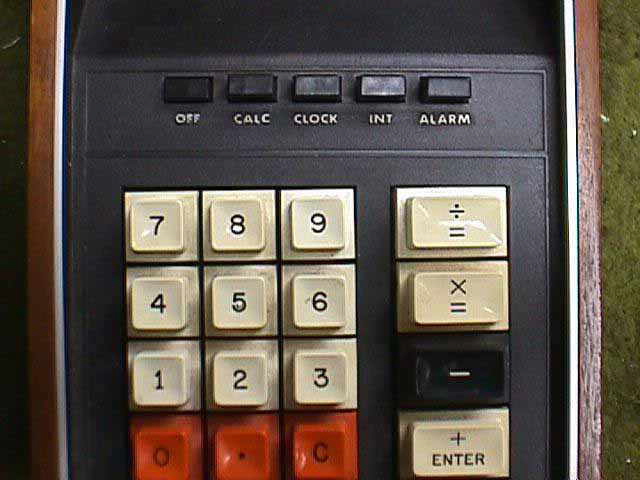
Be sure to note the buttons to change the function from a clock to a calculator. (This keypad style and layout is very similar to a Garrett calculator I own which is why I suspect the Garrett link)
The other style variation is what has been recently called "a space helmet." The really cool thing is the rotating hood which covers the keypad and display, but rotates back so you can gain access to the keypad. The hood is a tinted see-through plastic. Very reminiscent of the 1970s! (Shades of Austin Powers!)
Of this style, there are three known model types. I have two and picture links are below. A 3rd model of this series recently sold on ebay for $61 (April 1998). It looks the same as the other two I have except that it has additional features. I will add a photo of that model when I can.
The two models I have are the 3C1010 and the 1212. Here is a photo of the two together with their plasma-type displays on.
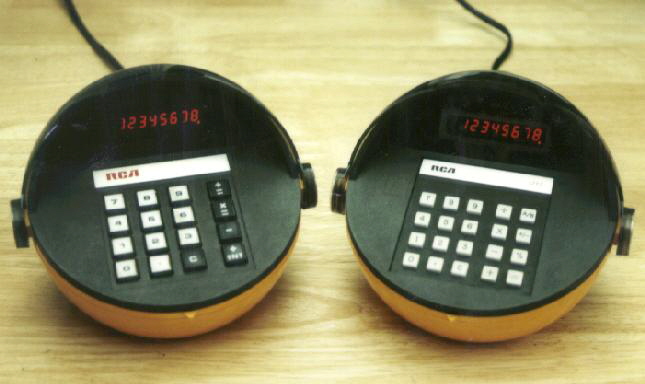
Both calcs run off of AC power (line power) and are not battery powered. They use an eight-digit, orange-colored, plasma display. Both models are made in the USA.
The 3C1010 has only 4 basic functions. To add two numbers such as 89 and 17 you would press 89 and the + ENT key and then 17 and finally the + ENT key to get the answer. For subtraction, you would press the - as your final key.
The 1212 seems to be more algebraic with the addition of a separate = (equals) key. The 1212 has some additional functions, including sign change, percent, and A/B keys.
Besides the globe-shape (space helmet???) and the school bus yellow/orange color, which both units have, the 1212 uses an interesting spring-loaded wire switch which turns the unit on when you open up (rotate back) the cover. The 3C1010 has a simple black slide switch on the back to power it on.
By the way, the price tag on the instructions for the 3C1010 says $69.95 and it was sold at a True Value hardware (?) store.
That's all I know at this point.
Here are a few more photographs:
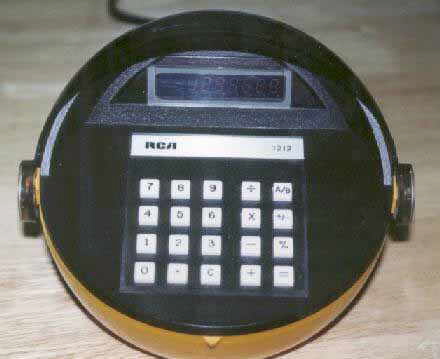
RCA model 1212.
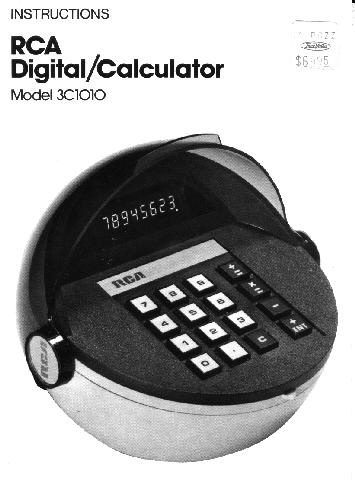
Cover of instructions for model 3C1010.
"Space helmet" style calculator with cover open.
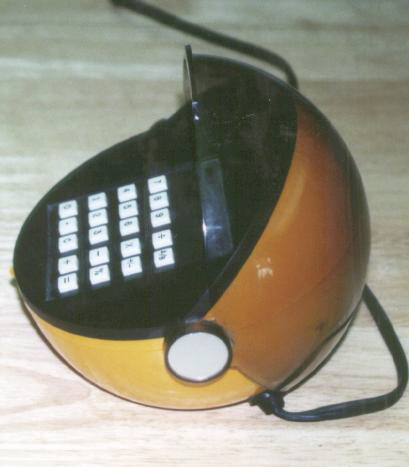
"Space helmet" style calculator with cover closed.
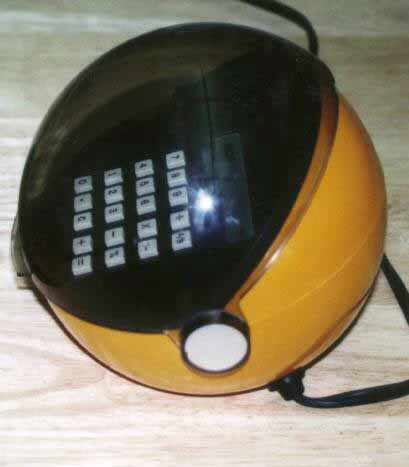
Photos above copyright 1998 by Guy Ball and Kurt Lofback. Please do not use without permission. Thanks.
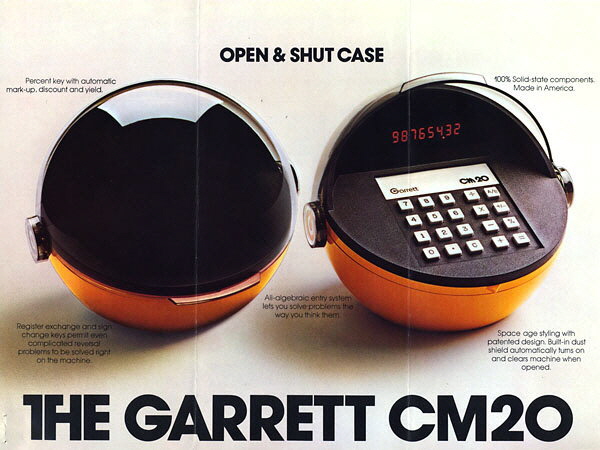
Advertising brochure for the Garrett CM20 version of the calculator.
Philip Cole has kindly provided further information and detailed photographs from examining his "space helmet" calculator (Photos copyright 2019 by Philip Cole. Please do not use without permission. Thanks):
I have one of the quasi-rpn RCA 3C1010 "space helmet" calculators. I recently had it open because I was doing some repair work to it, and I wanted to provide a little bit of additional information that your readers may find interesting.
The main processor is a National Semiconductor MM5725 "one chip calculator" which incorporates a display driver and oscillator onboard.
While it was apart for repairs, I also noted an unpopulated switch position with three contacts. If you look directly to the left of the "7" on the case, you can see the remnant of a die repair where the manufacturer filled in a hole on the plastic mould. This is directly above the unpopulated switch contacts.
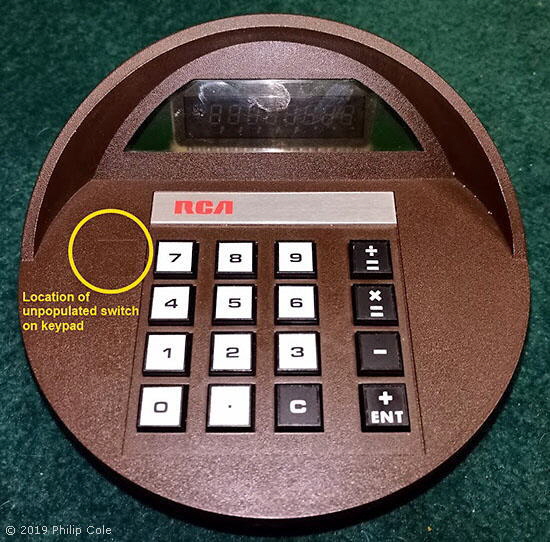
The front of the RCA 3C1010 with the location of the unpopulated switch highlighted.
Given a review of the datasheet for the MM5725, it appears that these switch contacts do not correspond to any function that the MM5725 uses, and would, in fact, cause erroneous operation should either position be closed. Therefore, I suspect that the calculator was originally designed around a different chip.
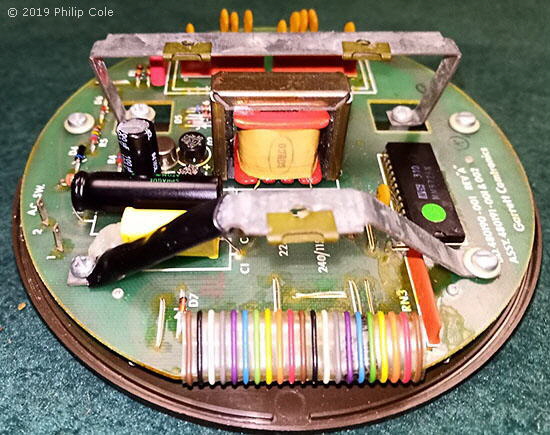
The components on the circuit board behind the keyboard and display. The National Semiconductor MM5725 "one chip calculator" is in the right.
For reference, if the display appears garbled, owners should consider replacing (or having replaced) the three capacitors that are part of the power supply, or at the very least, just the electrolytic capacitor. Mine failed and leaked after a year of use on my desk, so I replaced that and all the other non-ceramic capacitors, which restored proper operation.
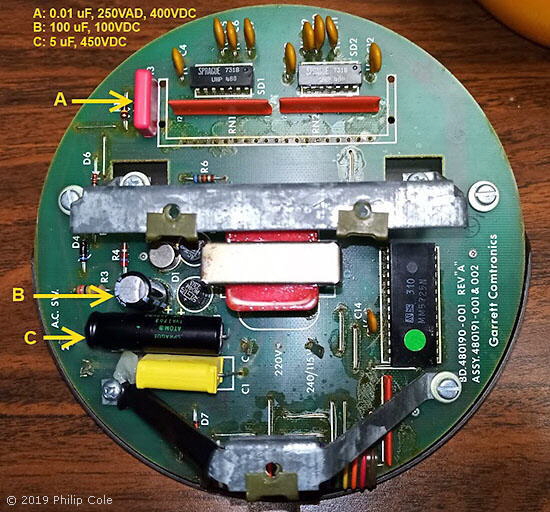
The circuit board with the power supply capacitors that Philip replaced indicated.
Note that the MM5725 calculator chip is date coded 1973 week 10, and that the circuit board was manufactured by Garrett Comtronics.
The issue with the garbled display presented as the middle-segment (the one that turns a 0 into an 8) was always on when a digit was in use. If this calculator is used on 50hz systems with only voltage step-down, this could manifest in a different way.
The three capacitors I replaced are indicated above, I probably only needed to replace "B".
There is a provision for a 220v power input version that was not populated on my version.
Calculator Articles
Vintage Calculators
Text & photographs copyright, except where stated otherwise, © Nigel Tout 2000-2026.